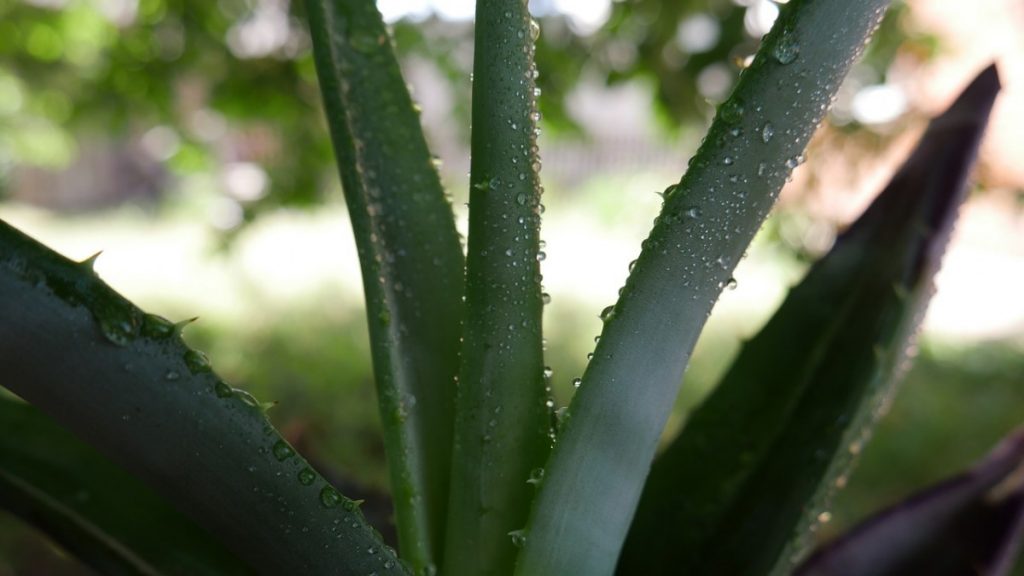Succulentsgrower.com is a participant in the Amazon Services LLC Associates Program, an affiliate advertising program designed to provide a means for sites to earn advertising fees by advertising and linking to Amazon.com. Amazon and the Amazon logo are trademarks of Amazon.com, Inc. or its affiliates.
Can Aloe Vera grow in artificial light?
Aloes are native to semi-desert areas of Africa and Arabian peninsula. If you’ve ever been to these corners of the world, you will know the sun is pretty strong, and it shines a lot down there. What I try to say here is that in their natural environment, aloes always get a lot of direct sunlight, and they thrive in such an environment. Having said that, we know more than 500 species belonging to the Aloe family, and the cultivated Aloes you buy in your gardening store or from Amazon do not need that much light to thrive. The question remains though: Can you grow Aloe with artificial light only? And if you can, how much light it actually needs to survive, and look well? The question isn’t that easy to answer, and we have to look at couple of things. Before diving into the details, however, let me give you a quick answer: Aloes can grow and prosper in artificial light, but since it doesn’t provide the same benefits as real sunlight does, they will need at least 12 hours of artificial light a day. That’s a quick answer, but let’s have a look at important details, as well as my recommendation for best grow lights.No two grow lights are the same
Long gone are the days when you went to some brick and mortar store and bought one of the two models of grow light they had in stock. Nowadays, for example on Amazon you can get dozens if not hundreds of different grow lights (see yourself on this link). Not only do they come in different designs and sizes, to perfectly fit your needs, they also come with different luminosity, and different technology. Obviously it makes a lot of different if you use grow light with 1000 lumen per square meter and 4,000 lumen per square meter. Aloes can feel the difference, and you won’t need to have the stronger light on for such a long time as a weaker one. What I try to say here is that you should take the 12 hour mark just as a general benchmark. Start with twelve hours, and observe the plant. If it changes color, getting lighter, it is a clear sign the 12 hours is not enough, and you need to run it even longer. On the contrary, if you observe no such changes in the plant, you may try to lower the amount of hours to 10, and then even to eight, trying to find the sweet spot. Your Aloe won’t die or stop growing if you give it two hours less of light as you’d give it in an ideal case. The key is to find the optimal amount.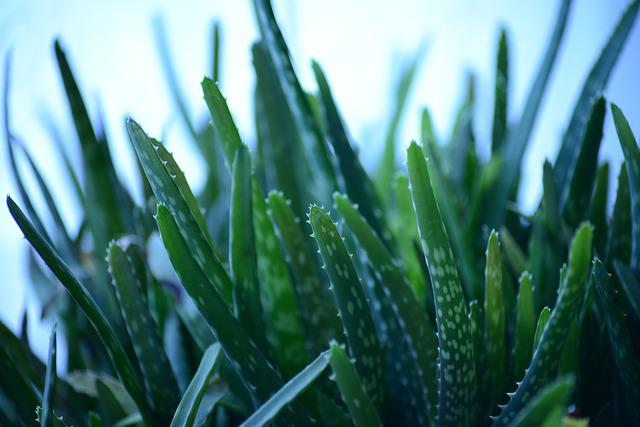
Bring your aloes outside at least sometimes if you can
I know it is tempting growing Aloes in an office with no windows, or even in some basement for commercial reasons. But I honestly believe that especially in this age, we should always have climate change on our mind. Grow lights and other forms of artificial lights spend a lot of electricity. That’s why you should use them as a last resort only. Before buying one, think whether you cannot actually place your Aloes outside. Even if you place them outside for just a few hours, let’s say three hours a day, you can reduce the time under the grow lights by half, save money in the process, and also do something for the planet. Nothing beats real sunshine, and the energy from sun is virtually inexhaustible. That’s why you should try your best to use this source, though I understand it isn’t always possible, for example when you live in an area which gets little sunshine throughout the year.What is the best artificial light for Aloe Vera?
You need to consider several things when picking the best light for your Aloe:- The brightness and power (luminosity). My suggestion is to go with light that emits at least 2,000 lumen per square meter, if you’re ready to have the grow lights on for 12-14 hours a day. More lumen will for shorter periods of lighting.
- The number of Watts it consumes. This parameter is more about your electricity bill than the well-being of the plant. The more Watts the light consumes, the more you will have to pay each month. However, there is always some correlation between the brightness and energy consumption. Even if you look for energy efficient lights, you cannot expect to spend virtually no electricity with a powerful grow light.
- Color temperature of the light. The best color temperature for Aloes starts at about 5,000 Kelvins, since such light best resembles the light they get from sun in the native areas.
- The amount of heat the light radiates to the surrounding. You should look for lights that do not emanate too much heat, which is luckily the case with vast majority of modern LED grow lights nowadays. Avoid old models of grow lights that would make your room too hot.
- The design and height fitting for your setup. Before purchasing the lights, you should have an idea how the entire setup should look like: how many plants you want to have in the room, in what containers, if they will be on the ground or on some tables, etc. Many grow lights have adjustable height, but it is still important to look for a model that will fit well into the current setup.
Final thoughts
Artificial lights can never quite replace the sun, regardless of how much the technology has advanced in the last ten years. Having said that, you can definitely grow aloes in artificial light, and if you choose a good light (following the recommendations from this post), and give your Aloes enough hours of artificial light daily, I see no reason why you couldn’t be successful with your plants. It is also a good idea taking the plants outside at least once in a while. Remember that one hour of real sunshine easily beats 3 hours of artificial light. Taking your plants outside for a few hours daily can save you a lot of money on your electricity bill. And your aloes will be happier too :).Root rot and Aloe Vera – Causes, remedies, myths
Root rot is the no.1 problem people experience with Aloe Vera, and also a no. 1 reason why your Aloe may die. It isn’t surprising though, since Aloe is a succulent, and succulents are native to very dry areas. Inexperienced growers, or simply people who give their plants too much love and attention (more than they need), may often over-water their Aloe (the most common reason for root rot), or over-fertilize it (in fact Aloe needs no fertilizers, it actually thrives in neglect), or make one on the other mistakes leading to root rot. In this article we will analyze the problem in detail. First of all I will show you how you can identify root rot in your Aloe. Then we will look at most common causes, and what you can do to minimize the chances of your Aloe rotting. Last but not least, we will also discuss what can still be done in different stages of root rot, and how can you save your Aloe plant. If you have any more questions after reading this article, do not hesitate to contact us for help.Look, smell, and secondary symptoms can all help you identify root rot
Roots are hidden under the surface, and many people think it is hard identifying any problem with them. In fact you have several ways of making sure that root rot is to blame, and that it is the problem your plant faces. Below are just some of the symptoms you can watch for, primary (considering the roots of Aloe), and secondary (considering other parts of the plants that are affected as a result of ongoing root rotting).- Color and firmness of the roots. You do not need pull the entire Aloe plant out of the pot to inspect the roots. You can just dig a small hole and try to get a hold of couple of roots. Clean them from soil with a wet cloth and inspect the color and structure. Healthy Aloe roots are white and firm. If the roots are brownish and relatively soft, or even have a yellowish color, you can be almost sure some rotting is going on in the pot.
- Smell of the root area or even of the soil. Rotten things do smell badly, and roots of plants are no exception to the rule. Normally they should have no smell, or a sort of “earthy smell”, if you know what I mean. If they smell badly, however, like rotten food or rotten apple, you can be sure some decay is going on. In more severe cases you can smell the rot even at the base of the plant, without a need to uncover the roots.
- Plant is wilting for no apparent reason, the soil is always wet. If the Aloe plant is wilting or acting strangely for no apparent reason (such as changing color), you can be almost sure the roots are rotting down there. Aloe is a versatile plant, and it isn’t commonly struggling with pests or other issues. Hence if something is wrong and the plant is dying, you likely over-watered it and the roots are rotting. Checking the moisture of the soil isn’t a bad idea either. If it is super wet though you haven’t watered your plant in a week or two, you likely have a problem with bad soil type or bad drainage, the roots remain constantly wet and logically rot.
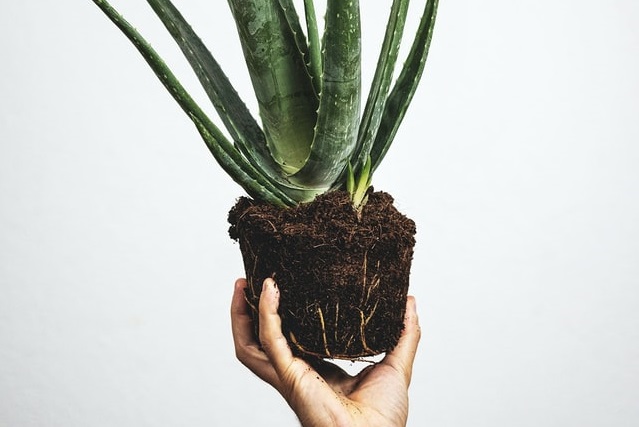
Most common causes of root rot in Aloe Vera
Once you inspect the plant for the symptoms above, and are certain you face root rot, you may wonder what happened, what you did wrong. In my experience, 95% of cases of root rot in Aloe Vera are a result of over-watering the plant. Hence that’s the first thing you should focus on. What many people do not realize though is that over-watering isn’t necessarily caused only by too frequent watering of your Aloe. Drainage system also matters, as well as the soil type you use (whether it is compact or not, the level of aeration it provides, whether it holds moisture or not, etc). What I try to say here is that someone may water their Aloe once a week, but, picking the right soil, using the soak and dry watering method, and having a right-fit terracotta pot with drainage hole, their Aloe may be just fine and roots may be completely healthy. Whereas someone else may water their Aloe just once in every two weeks. Yet the pot has no drainage hole, the soil retains too much moisture, the roots are always vet, and they will rot. I hope you got my point now, and will think about all the factors that impact the moisture of the soil of your pot with Aloe (type and size of pot, type of soil, drainage or not). In some rare cases over-fertilization, or some strange infection of the roots (fungi) can also cause root rot in Aloe. You should consider these causes though only when you rule out over-watering, since as I’ve said, over-watering is the reason for root rot in 95% of all cases with Aloe.Saving an Aloe Vera plant with rotten roots
I am not sure if I have good news for you here. When the root rot progresses to certain stage, with vast majority of the rooting system rotten to the core, you won’t save your Aloe anymore. If you still see some healthy leaves on the plant you can try to propagate it, but that’s about it. At the end of the day Aloe Very isn’t a rare or expensive household plant. In many cases the best thing you can do is to cry a little for your old plant, and buy a new Aloe in the shop. This time around though you will pay more attention to it, and make sure to avoid the mistakes that caused the root rot to your original plant. Having said that, if you spot the problem early, you may still save the plant. Early means that just a part of the root system is rotten, not the entire system. In such a case, follow the steps outlined below:- Remove the plant from the original pot and carefully clean the roots from all soil, in order to clearly distinguish the healthy parts from the rotten ones.
- Cut away all rotten parts of the root system, leaving just the healthy roots on the plant (even if it is just few roots).
- Plant the Aloe in a new pot, making sure to use the right soil mix and a pot with drainage hole.
- Wait. In many cases the plant will recover and grow new roots, but in some cases it won’t. At this stage there’s not much you can do except of waiting, and making sure you do not water your Aloe in a way that can cause a new round of root rotting.
Conclusion
Root rot is the no. 1 problem Aloe growers experience. In vast majority of cases it is caused by over-watering. If you identify the problem early enough, you may still save your plant. But if the roots are rotten throughout, there’s not much you can do except of getting a new plant.White spots on Aloe plant – What they are and how to deal with them
When we grow plants we want them to thrive. Hence if we see anything atypical on the leaves of our Aloe, for example white spots (that haven’t been there before), we wonder what’s going on, and whether we should take any action. The answer to this question is not as simple as it seems, since white spots can appear on your Aloe Plant from several reasons. In this post we will analyze three main causes, responsible for vast majority of “white spots incidents” with Aloes. Before we dive into details, let me give you a quick answer. White spots may appear on your Aloe from the following three reasons: Lack of sunlight (especially if the plant was used to certain amount of sunlight and doesn’t get it anymore), lack of certain nutrients (this happen most often after you repot the plant, and use a different soil, but it can be also a result of prolonged over-watering), natural changes in the color of Aloe (more on it in a second). I will analyze each cause, helping you to identify the culprit, and take the right action. Before that, however, I want to emphasize one thing: Each plant is unique (just as each human being). Pay attention to your plant, and try to understand it. It will help you not only to identify the root of the problem, but also to take care of it as well as possible.White spots are natural for certain species of Aloe plant family
When thinking about Aloe, most people imagine Aloe Vera, the famous medicinal plant, renowned for its use in skin-care and wellness industry. However, you should realize that we know more than 500 plant species belonging to Aloe plant family, and many plants branded as “Aloe” in your favorite brick and mortar store, or even online, are not Aloe Vera. Many of Aloe species actually have whites spots on their leaves. So the first thing you should do is inspecting the label on the pot (if there’s any), and identifying the exact type of Aloe you have at home. Then you can Google the exact Latin name, and check the pictures, ideally from respectable botanist websites. You may end up surprised that the Aloe you have at home is actually one of the Aloes with white spots :). What may confuse some people is that with some Aloe species, the white spots do not appear on the plant immediately, from a very young age. They develop just later, as your plant gets a bit older, which can create some wrinkles on your face, because we people are always afraid of changes. As I said though, in this case the white spots can be completely natural, and you do not need to take any action. Just enjoy the spectacle…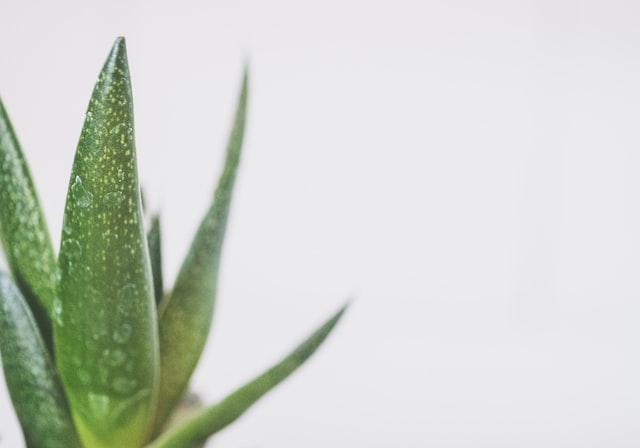
Lack of light as the most common reason for white spots on Aloe plant
If you rule out the first cause (natural coloring of the plant), or are 100% sure you have Aloe Vera, then you should think about the amount of light you give to your plant. Aloes are native to semi-desert areas, and they grow in places with strong sun, and lack of clouds. Of course, Aloe from the store is not the same as some wild Aloe, but the genetics does not differ that much. Now two things can happen. First, you generally give your plant little light over an extended period, for example keeping it in a bathroom or in an office with no windows. In such a case, white spots on leaves will appear. The second case is a bit more tricky to comprehend, since it relates to relative changes of sunlight your Aloe gets. Let me explain it. Maybe you bought your Aloe and have it in a room where it gets decent 6 hours of indirect sunlight, placed near a window. It may seem that’s enough, and no reason for white spots. However, the following thing can be the case: In the shop where they had the Aloe before you bought it, they placed it in the courtyard, exposed to full sun, for entire days. The plant “got accustomed” to such generous amount of sunlight, and do not find the six hours of indirect light it gets in your house satisfactory. As a result white spots appear on the plant. Luckily for you the remedy is quite simple here. You just need to place your Aloe to a different location in the house (or outside of it), treating it with more sun. If you do so, the white spots will disappear.Lack of nutrients as the most tricky cause of white spots on Aloe plant
In a certain way plants do not differ much from us humans. Just as we do need certain nutrients to feel good and look healthy, so do plants. When we humans lack Calcium and Zinc, for example, white spots will appear on our nails. And when Aloe lacks certain nutrients, white spots may appear on the leaves. But how is that possible, and what causes this? Lack of nutrients can happen for several reasons. All of them are quite common, and they happen mostly to inexperienced succulent growers (we all need to learn the hard way after all :)). Let me cite the main reasons:- Bad soil mix. Aloe is a succulent, and you should not plant it in typical garden soil or even some substrate for tomatoes or lettuce. Go with soil for succulents instead (you can get it on Amazon for example), for optimal nutrients content for succulents.
- Repotting the plant insensitively. Changing the pot without cleaning the roots of the Aloe of excessive dirt, or placing it from one type of soil to another, or including some strange substance in the soil mix can result in either lack of nutrients or plant’s inability to gather them from the soil.
- Prolonged over-watering. If you drown your Aloe in water for too long, the roots will rot, and they will lose their ability to transport water and nutrients to the body of the plant. In such a case it doesn’t matter what soil you have, or even if you fertilize the plant (which I do not recommend). The amount of nutrients in the soil doesn’t matter in this case, since the roots cannot transfer them to the plant anymore, and it will suffer from lack of nutrients.
How to deal with white spots on Aloe die to lack of nutrients
Obviously each of the three causes is different, and needs a different remedy. The first one (bad soil) is the easiest one to address. Just repot the plant. You can even use the same pot, the key is to just get the right soil mix this time, the one for succulents, or even for Aloes in particular (I’ve seen once a soil mix branded as ideal for Aloes, but maybe it was just a marketing trick). The second cause–insensitive repotting, may be a bit harder to address, depending on the damage done to the plant and its roots in the process. But you can again try to repot it afresh, this time cleaning the roots, and cutting away any damaged parts, giving the plant a fresh start. This time around make sure you do not experiment with strange materials in the soil. The third cause of lack of nutrients, over-watering, is the hardest to address. If it’s been going on for too long and the entire root system has rotten, your only option may be throwing the plant away and starting with a new one. With over-watering, prevention is the best cure. Make sure to plant your new Aloe in a pot with a drainage hole, using the right soil. And observe the right watering schedule for your Aloe. If you stick to these three rules, you should not lose your new Aloe to over-watering.Final thoughts
As you can see now, white spots can appear on your Aloe plant for a variety of reasons. Some of them are easy to address and some are not, and in some cases the white spots are completely natural and you should not worry. The key is to keep an eye of your plant, spot the problems early, and act on them.How to water Aloe Vera properly–Everything you need to know
Aloe Vera plants belong to the succulent family. Just like other succulents, they store water in their leaves and stems, which allows them to survive longer periods of drought, which are typical for they native land–the semi-desert areas of southern Africa and Arabic peninsula. As it is always the case, however, a strength of a plant can quickly turn into a weakness. This characteristic of Aloe Vera also makes the plants vulnerable to overwatering. And just like other succulent species, you can kill your beautiful aloe if you water it too much. So, how much water does this amazing plant with medicinal benefits need? The truth is no one can tell you the exact amount of water that aloes need. It depends on many factors, and the two most important are size of the plant and climate. Before watering, make sure that you check the moisture in the soil. Aloes do not like too much water. water the plant only if the soil is completely dry. Most importantly, make sure you use the right soil for your succulents. Using a quality fast draining succulent potting mix such as this one on Amazon, you immediately reduce the chances of over-watering your aloe by more than 50%. And that’s no little number…Electronic moisture meter can help you if you cannot determine whether the soil is really dry
If you do not like sticking your finger into a soil, or simply do not have a good feel for it, you can use electronic moisture meter (click here to check my recommended moisture meter on Amazon). In my opinion, this is the best way to check moisture of the soil, especially if you have many plants. The device is pretty affordable too. But if you do not want to spend money, you can go with the basic–putting your finger inside, and seeing whether the soil sticks to it–if it does, it means it is still wet. Another alternative is weighing the pot when the soil is dry, jotting down the actual weight of the pot. Next time you’ll want to water your aloe vera plants, check the weight of the pot first. If it is heavier than it was with dry soil, it means there is still water in the soil.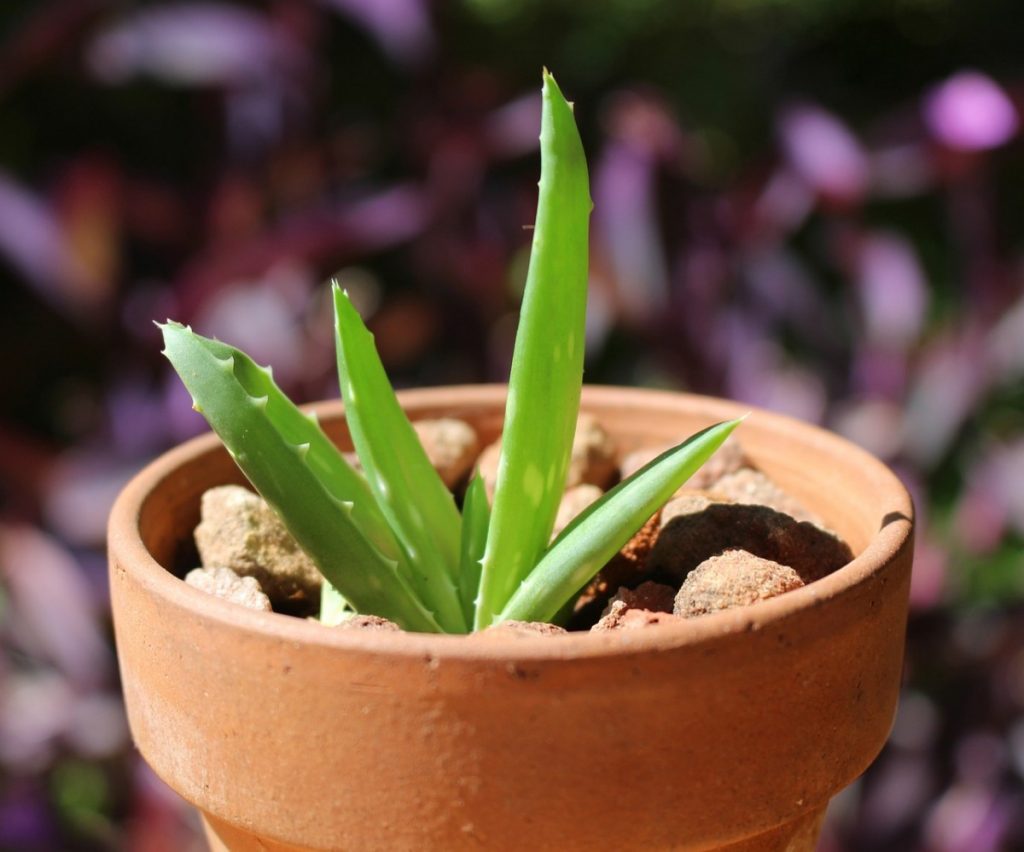
So how much water do aloe vera plants actually need?
Let’go back to this question. Although there is no general rule on how much water you give to your aloe plants, you can use something to measure the amount water. For instance a measuring cup. This works well, especially for small plants. All you need to do is to pour a cup of water into the soil of the pot and let it drains down to the bottom of the pot. Add more cups as necessary. As soon as you see water draining down, stop watering. However, make sure that the pot has a drainage hole, as it allows the excess water to drain. If the pot has no drainage hole as you got it from the shop, you can drill a hole in the bottom of it. After watering your succulent, take note of the amount of water you gave to your aloe. Now you can use it as a benchmark for your next watering.What’s the best time to water aloe vera plants?
You can find different recommendations online when it comes to watering aloe vera. Someone says in the morning, someone says in the night, and so on. In my opinion, the best time to water aloes is simply when their soil gets completely dry. Be it in the morning, afternoon, night–doesn’t matter much. When you only water aloes when the soil dries, watering depends on the moisture of the soil, and not on some artificial schedule we people follow but plants don’t. Because there are many factors that affect the presence of moisture in the soil, the watering frequency may vary depending on the season, and also the actual weather in your place. As a rule of a thumb watering is more frequent in summer than in winter. But you know that sometimes we have rainy summers. And if it is the case, it rains all the time and there is a lot of humidity in the air, it makes no sense forcing watering of plants, just because you did not water them for 7 days or whatever.How to make sure you won’t overwater your aloe vera
I already mentioned that the soak and dry watering technique keeps the aloe vera plants safe from overwatering. While it is true, you need to keep on your mind two other things. First one is using fast-draining soil for succulents for your aloe vera plants. When you use regular garden soil it retains too much water and the rooting system of the plant will start to rot. Hence I always recommend using well-draining soil. It does not only provide good drainage but also aeration to the plants. The second thing is to always use a pot with a drainage hole. The excess water should come out of the pot through the hole at the bottom of it. If there is no hole, the water stays inside, soak-and-dry watering technique makes no sense, and you’ll have problems with your plants…How long can aloe vera survive without water?
Aloe vera plants are resilient and can survive for weeks or months without water. However, it is important to remember that their capacity to survive in drought depends on environmental factors. Remember that although aloes are tolerant to drought, they cannot survive without water for too long. Like other plants and any other living organisms, they will die in the absence of water. I also believe that your goal isn’t to merely make sure your plants “survive”. You want your aloe vera to thrive, and in order to make it happen, you should not make experiments about how long it can survive without water.Final thoughts
Like other succulent species, aloe plants need water in moderate quantity. But there is no exact measurement and nobody can tell you the exact amount of water aloe plants need, and how often you should water them. However, if you follow the soak and dry watering technique, you should be safe, and your plants should thrive.Is yellow liquid in Aloe Very poisonous?
If you are growing Aloe Vera for a while, or perhaps you at least use its properties to maintain your hair and skin in a good condition (with the help of some amazing natural creams, such as this one), there is a high chance that you hear some rumors about the safety of this plant, and especially the yellow liquid inside it. But what is truth, and what are only myths, when it comes to the health risks associated with Aloe Vera? We will have a look at it on the following lines. Aloe Vera is a type of succulent plant. As you know, succulents are sappy and store the liquid in their leaves and stems–this is nothing that should scare you, generally speaking. Talking about Aloe Vera in particular, its yellow liquid will ooze out as you cut the leaf. Many people wonder, and this might include you, whether this substance is safe or not. Let me clarify this straight away.Latex containing aloin, not entirely safe
The yellow liquid in aloe vera is a latex which contains the anthraquinone glycoside ‘Aloin’. Okay, I know this doesn’t tell you much, so let me explain :). In a small amount, this substance is not toxic but can potentially cause skin sensitivity. If ingested, however, it can cause intestinal pain and severe laxative effect. It may surprise you, but Aloin was formerly sold as a laxative, just to be later retrieved from the market due to its painful effect on the intestine. * Special Tip: If you have problems with going to toilet regularly and look for a more natural remedy, you can check this amazing product on Amazon: Swiss herbal laxative. Does this mean that aloe vera in general is dangerous? Not really, at least not for adults. A child may find the yellow liquid attractive and taste it, so can an animal, so you should be careful once cutting your Aloe vera. Worries aside, Aloe Vera has several benefits for the hair and skin. What you can do to avoid the Aloin is to get just the gel and stay away from the yellow liquid. You can do this by peeling the leaves to remove the latex and scrape the gel.In the liquid in Aloe Vera the substance we use in cosmetic products?
I have mentioned this earlier but I want to elaborate on it a bit more. The yellow liquid in aloe vera that oozes from the cut of the leaf is a latex. This is not the aloe gel that you want to use for your hair and skin. The gel is a clear and thick liquid substance. The other distinctive feature of the yellow fluid is its smell. It has a funky smell, whereas the gel is almost odorless. You should do your best to avoid contact with the yellow substance. Why it isn’t going to cause you any severe harm, it can cause skin irritation and when ingested, it can potentially cause diarrhea due to its laxative effect. So take it easy, and get the best out of your Aloe Vera plant–the gel.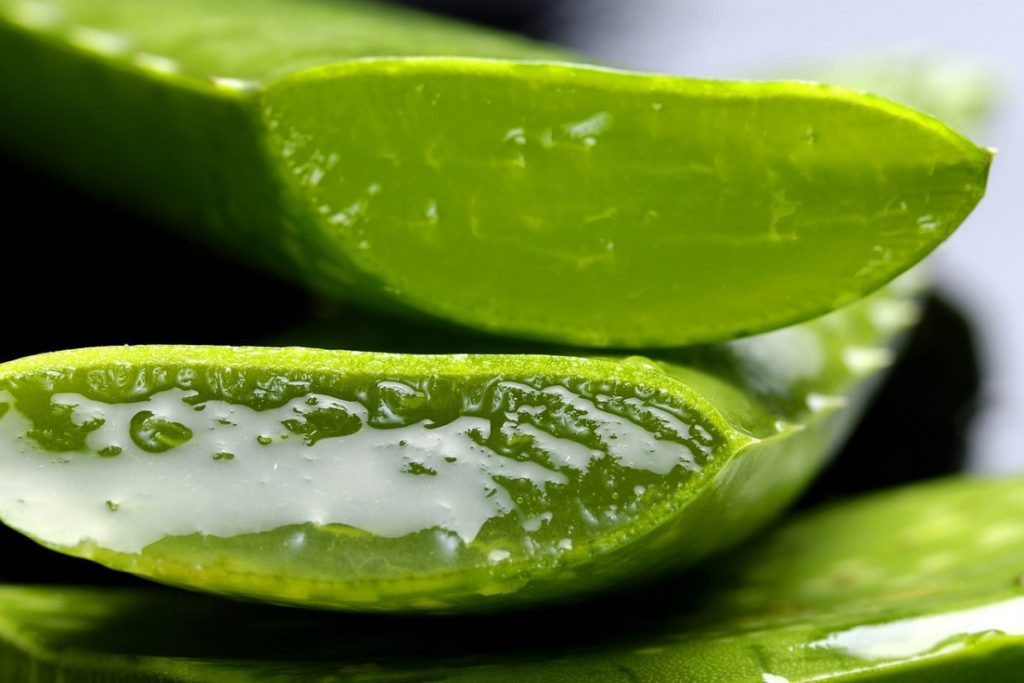
Have any people died after consuming the yellow liquid from Aloe Vera?
The Aloin or the yellow substance in the aloe leaves will not cause sudden death if accidentally ingested. In fact, for decades, many people around the world use it as a laxative. It does a good job of treating constipation. In the past, we relied much more on natural medicine as we do today. If you told your neighbor that you took some liquid from Aloe Vera to help your constipation, they would think you were crazy. In the past, however, such practice would be considered completely normal.. Having said that, the regular ingestion of this yellow substance would not be without side effects. It could have a negative effect on your health in the long run, especially on your intestine. So it is better to avoid altogether, unless you are in for some crazy experiments… Some of the potential side effects of latex ingestion are kidney problems, irregular heartbeats, stomach cramps, and weakening of muscles in the body. Aloe vera latex is even more dangerous for pregnant women. If you ingest it accidentally in any statistically significant quantity (not one drop), I recommend that you seek advice from a medical professional. Although it is not entirely fatal, it is better to be safe than taking it for granted. The only time you can realistically face this situation is when harvesting aloe vera. To avoid it, what you can do is to cut the leaf and allow the yellow liquid to just ooze out. After 10-15 minutes, rinse the leaf to clear the yellow substance. Make sure that you use gloves (check these beautiful gardening gloves on Amazon if you do not have any) when doing so. It is the first defense against skin irritation caused by the Aloin.Final Thoughts
Aloe Vera plants are some of the miraculous plants that have many benefits for humans. Aloe vera has been known for its ability to treat human hair and skin (* you can check my favorite cream here on Amazon, this is an affiliate link, so if you decide to get it I’ll earn a few cents as a support for running this website). However, there is a part in this miraculous plant that could potentially bring problems to health if ingested in large amounts, and that’s exactly the yellow substance we talked about. This substance has a laxative effect that if ingested in large amounts, can cause intestinal pain and diarrhea. It can also cause skin irritation. Although the effect is not fatal, keeping yourself safe from it is always the best idea. When harvesting or cutting aloe vera leaves, make sure that you observe protective measures such as wearing a glove, and washing your hands once you are done with harvesting.Can Aloe Vera grow in winter?
To start with, Aloe vera is one of the succulents that can tolerate different levels of temperature. However, like other succulent families, aloes have certain needs, especially in winter, and in order to grow them successfully you need to provide for those needs. So, can aloe vera survive, let alone thrive in winter? A short answer is that it can, but it cannot tolerate frost, and hence if you live in an area where temperatures drop below zero you should take the plant inside for the winter. Let me elaborate on the key points here, making sure that you do not make any mistakes while trying to grow your aloe in winter.Inside is the answer
In my opinion, the best way to protect the aloe plants during winter is to bring them indoors. The freezing temperature outside during cold months will detrimentally affect the plant. But before bringing the plants inside, make sure that you clean them up from dirt and pests. This is very important to also keep your existing indoor plants safe from insects that could potentially ruin them, insects that they would normally not meet, but you can bring them inside together with your aloe plant. . Now that the aloe plants are inside, the next thing you need to do is to give them what they need in their new environment.